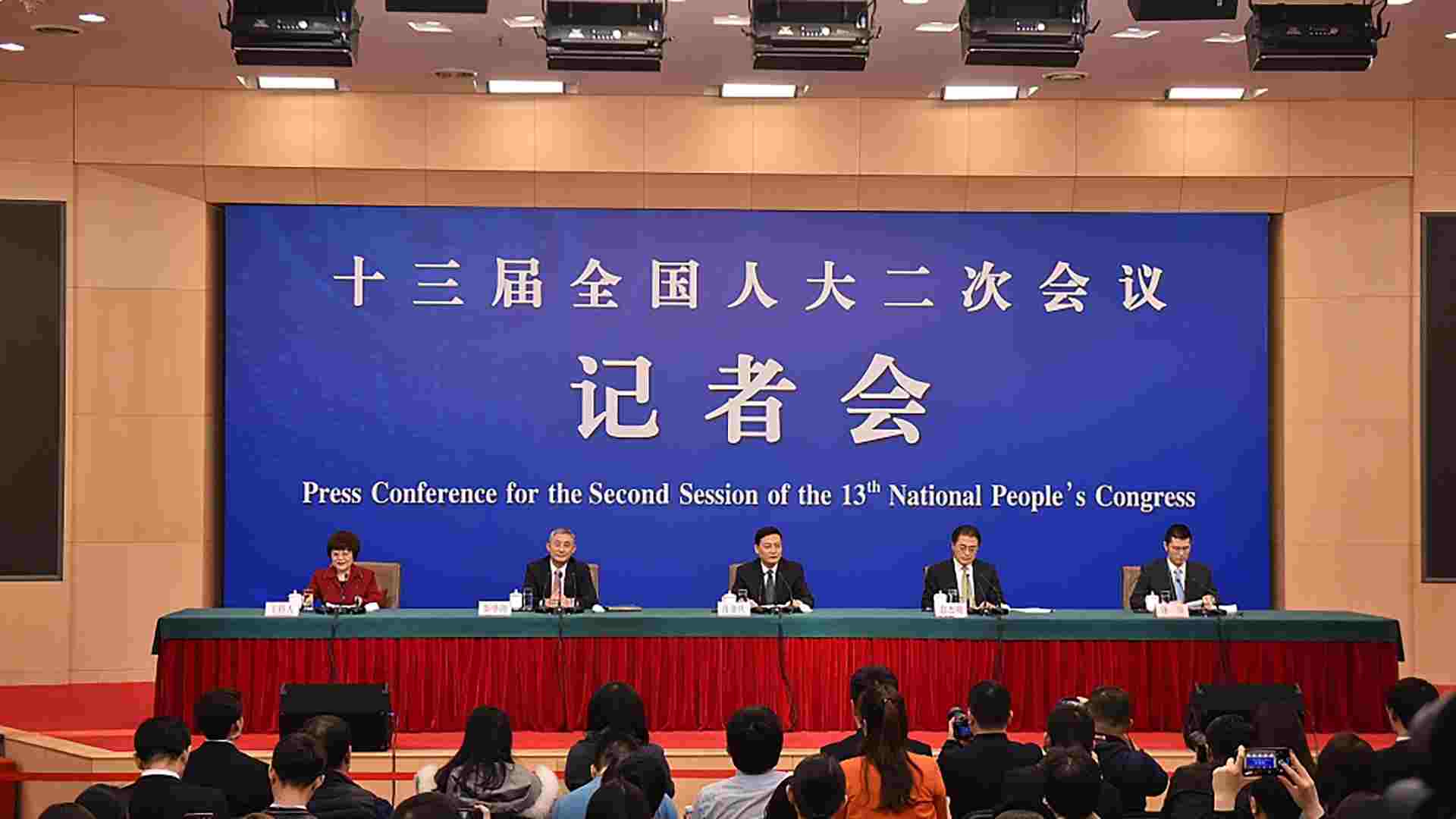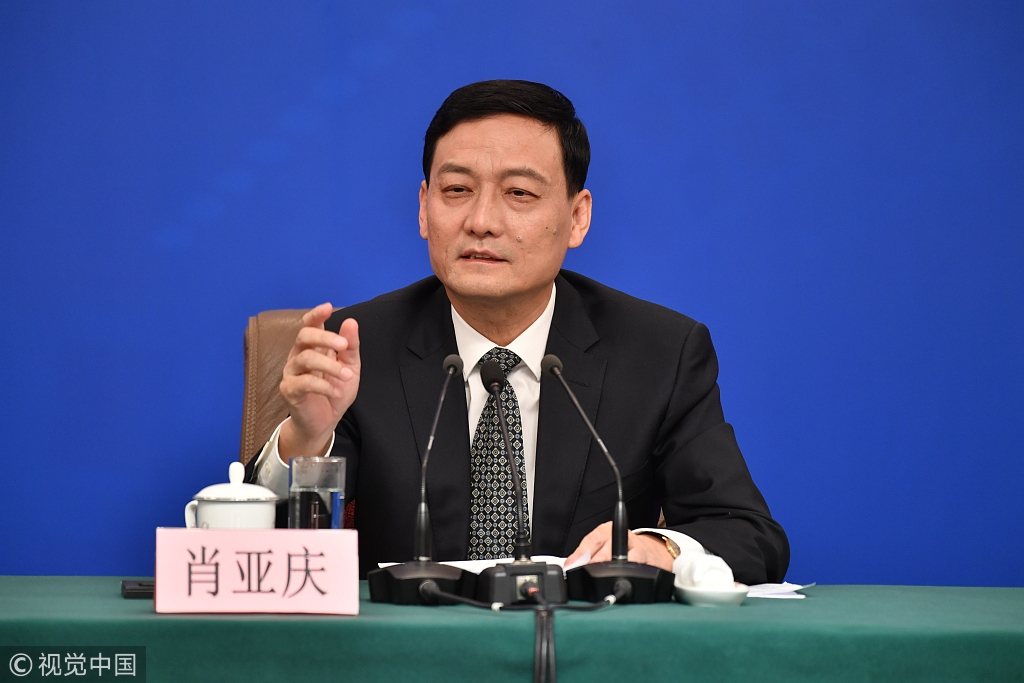
Economy
15:49, 09-Mar-2019
China to further SOE reform, says SASAC
Updated
19:56, 09-Mar-2019
CGTN
08:40

China's state assets supervision and administration authorities at all levels have advanced the state-owned enterprise (SOE) reform to a deeper level, and the mixed-ownership reform was also actively promoted, Xiao Yaqing, minister of the State-owned Assets Supervision and Administration Commission (SASAC) said on Saturday.
Last year, the centrally-administered state-owned enterprises (SOEs) registered 29.1 trillion yuan (4.33 trillion U.S. dollars) of revenue, 7.1 trillion yuan of value-added, 1.7 trillion yuan of total profit, 1.2 trillion yuan of net profit and 2.2 trillion yuan of tax contribution.
This January and February, the central SOEs saw a 3.9-percent increase in revenue and a 15.3-percent profit growth, according to Xiao.

Xiao Yaqing, minister of China's State-owned Assets Supervision and Administration Commission speaks at a press conference in Beijing, March 9, 3019. /VCG Photo.
Xiao Yaqing, minister of China's State-owned Assets Supervision and Administration Commission speaks at a press conference in Beijing, March 9, 3019. /VCG Photo.
Supply-side structural reform deeply promoted
With the purpose of high-quality development, the SASAC carried out supply-side structural reform at all levels. The annual mission of cutting overcapacity was fully accomplished as well.
The SASAC has taken solid measures to promote reorganization and integration, especially in the areas of equipment manufacturing, shipbuilding and chemical industry.
For example, two pairs of central SOEs were reorganized last year, including two nuclear companies, namely, China National Nuclear Corporation and China Nuclear Engineering and Construction Corporation.
By the end of 2018, the SASAC has reduced the number of legal person units by 12,829, or 24.6 percent of the total number.
The authority will also continue to advance the integration of electricity, non-ferrous metals, steel, marine equipment, and areas with environmental protection purposes. In this way, resources can be allocated efficiently, said Xiao.
Mixed-ownership reform being steadily conducted
The SASAC has actively carried out the mixed-ownership reform, which is the starting point of the SOE reform.
Listed companies have dominated the number of central SOEs, and account for 65 percent, 61 percent and 88 percent of assets, revenue and total profit respectively of central SOEs.
There will be more than 100 SOEs in the fourth batch of mixed-ownership reform, which will be carried forward in key areas, said Xiao.
In addition, SOEs also actively took part in the Belt and Road Initiative, and fresh achievements have been seen in recent years. The SASAC will continue to follow the international and local rules and regulations in project cooperation, said Xiao.
As for efforts to offset financial risk for SOEs, Xiao pointed out that SOEs should carry out screening work and do analysis at first. Enterprises should take targeted measures, and build their own risk-prevention mechanisms, instead of taking the one-size-fits-all approach.

SITEMAP
Copyright © 2018 CGTN. Beijing ICP prepared NO.16065310-3
Copyright © 2018 CGTN. Beijing ICP prepared NO.16065310-3